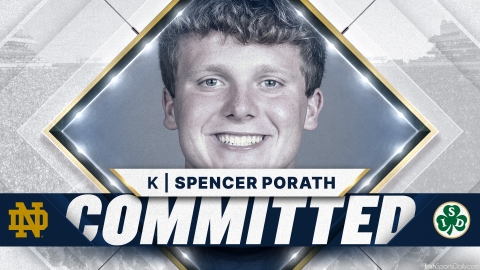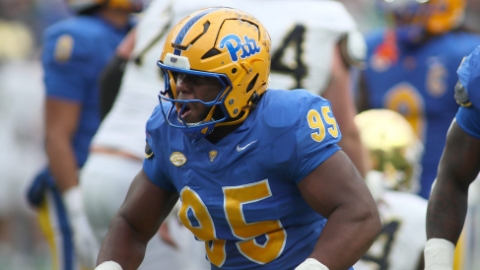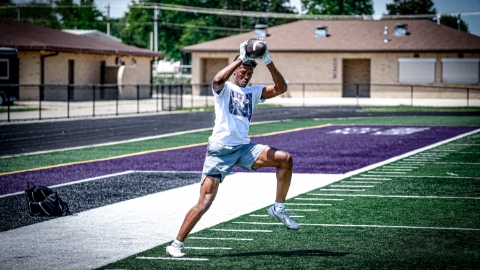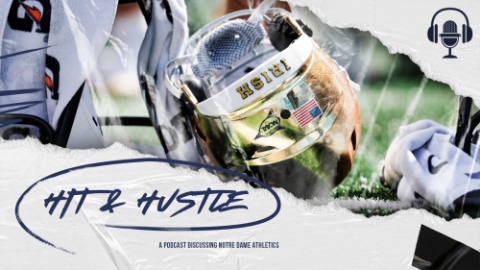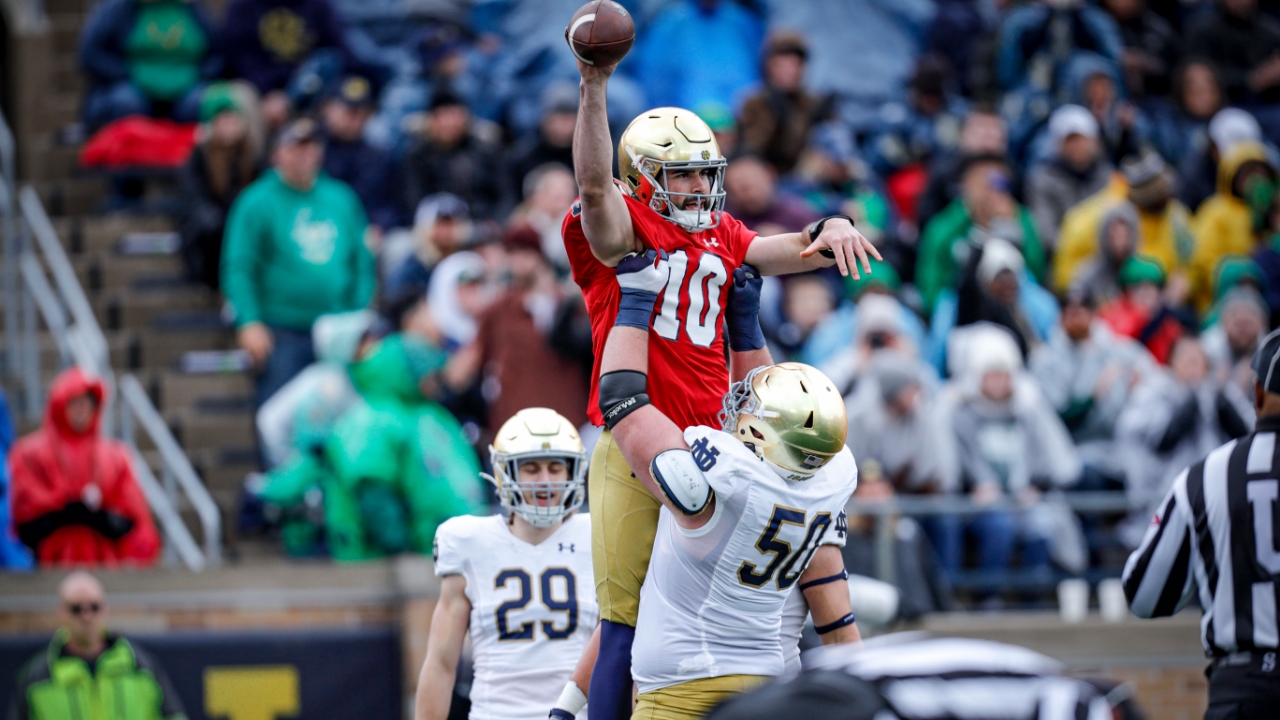
A lot has changed in college football in the last decade, but one thing that hasn’t is the discussion about numbers.
I’m not talking about stats or what someone wears on their jersey. I’m talking about rosters. These types of topics seem to dominate the conversation year after year.
Scholarship numbers: can they get under 85?
How many players should a program have at each position on the roster: is it true that you can never have too many defensive linemen?
And with recruiting, how many should a team take at each position and how many should they take overall: is oversigning always the correct answer?
I think the answers always change. Things have to remain fluid because the roster is always changing. Injuries, lack of development at a position, and flat out misses in recruiting end up forcing coaching and personnel staff to adjust on the fly. Plans may look one way one month and then look drastically differently the next because the transfer portal or a major injury can impact things quickly.
The boss, Mike Frank, and I started looking at the numbers Notre Dame signed in the last two classes and the current class they’re recruiting (2022-2024) for the most recent episode of Power Hour. It’s mostly an examination of the quality Notre Dame has recruited and whether or not it’s playoff or championship caliber, but the overall numbers at those positions interest me just as much.
It broke down like this for Notre Dame in terms of signees and commitments, but I’m also adding in the seven position players they’ve added as transfers (with the note that Notre Dame is definitely not done adding at certain positions):
3 QBs (plus one transfer takes it to four)
5 RBs (plus one transfer takes it to six)
7 WRs
4 TEs
13 OL (Joey Tanona medically retired and takes it to 12)
13 DL (plus two transfers takes it to 15)
7 LBs
5 safeties (plus three transfers takes it to eight)
7 CBs (Jayden Bellamy transferred takes it to six)
That’s 69 total.
Before I get into numbers at certain positions, I thought it would be good to look at Georgia as a comparable for a few reasons.
1) They’re the bar right now in college football so it’s always good to see how Notre Dame compares to them with anything.
2) They are built similarly on offense with the way they use multiple tight ends so the numbers should match a bit better in that respect.
3) They aren’t a portal team. They haven’t used transfers in the same way a lot of programs have. They have brought in five position playersin the last two cycles. Notre Dame has brought in eight (minus one with Kaleb Smith retiring), but they aren’t anywhere close to most programs in that department.
The philosophy of primarily building the roster through recruiting is the same for both programs.
Here’s Georgia by the numbers at each position in the 2022-2024 recruiting classes.
3 QBs
6 RBs (plus one transfer takes it to seven)
10 WRs (plus two transfers takes it to 12)
5 TEs
16 OL (minus two transfers takes it to 14)
17 DL (minus two transfers takes it to 15)
7 LBs
6 safeties
9 CBs (two transfers in and two transfers out negate each other)
They’re at 78, but it’s important to note that they have six more commitments in the 2024 class than Notre Dame. I was expecting a bigger numbers gap at certain positions and there really is only one big one. It’s at receiver, where Georgia has taken five more players (including two transfers who have multiple years of eligibility left).
It looks a bit different if Kaleb Smith, the transfer, worked out and Isiah Canion was still in the class, but those losses only make it more obvious that Notre Dame needs to add numbers at that position. Replacing Canion is a priority and adding at least one more this cycle should be as well.
Bringing in another corner in this class (possibly flipping Kaleb Beasley?) is another spot where a numbers gap can be closed and landing one more offensive lineman ( Guerby Lambert, come on down) is important.
Adding another quality defensive line prospect or two to the mix wouldn’t be a bad idea and you can see where adding a tight end they are high on would be nice (maybe we’ll see another Tommy Tremble or Mitchell Evans emerge for them), but Notre Dame would be fine if they simply want to concentrate on who they might pair with 2025 commit Nate Roberts in the next cycle.
I was honestly expecting for the numbers to swing more heavily in the direction of Georgia at certain positions, specifically on the offensive and defensive lines. The only thing that they did differently is take more swings on some players, but I’m sure they did it knowing that some of those guys were not going to stick and the four transfers proved that to be correct.
Comparing the level of prospects in general is a different topic and it’s been discussed to death this offseason by Notre Dame fans. As far as the numbers by position, this is one of those things where it shows that the level of worry about having enough at a position isn’t nearly as bad as many make it out to be.
Except for receivers, of course. That’s a hole Freeman and Chansi Stuckey are still trying to dig out of that was left over from the previous staff.
2. Here’s how the numbers look at each position for Notre Dame in the previous three classes before 2022:
3 QBs
4 RBs
8 WRs
4 TEs
11 OL
13 DL
6 LBs
4 safeties
9 CBs
They added one transfer at quarterback (Jack Coan), one transfer on the O-line (Cain Madden), one transfer at receiver (Ben Skowronek), one transfer at linebacker (Isaiah Pryor), and one transfer at cornerback (Nick McCloud).
I don’t think I need to list all of the names who were in these groups, but the only positions anyone would consider trading would be running back (Kyren Williams, Estime, Logan Diggs, and Chris Tyree), the offensive line (they are pretty much recruiting at the same level), or tight end (mostly because it includes Michael Mayer).
Every other spot is a clear win for the most recent three (er, two and a half) cycles at those positions.
No one is trading Brendon Clark, Drew Pyne, and Tyler Buchner for the three most recent quarterbacks the Irish have signed/have committed. Out of the eight receivers, only half were blue-chips (4 or 5-stars) and four ended up either switching positions or transferring after one year.
The average ranking with defensive line recruiting in the composite went up to .9146 from .9016 and they’ve added longer, twitchier athletes in general there.
They didn’t have anyone in the previous three cycles who would have come close to matching Jaylen Sneed, Jaiden Ausberry, or Drayk Bowen as a linebacker prospect. They’re increasing their speed and athleticism at the position.
Safety was Kyle Hamilton and three players who never played a down of football on defense. And only signing four in three years kind of speaks for itself.
Only three of the nine corners they signed were composite 4-stars from 2019-2021. They have five in the most recent group (not to mention one player is already an All-American candidate).
It’s not like I wasn’t already convinced that Notre Dame has made significant progress with the future of the roster, but looking at these three year windows next to one another was still eye-opening.
3. ISD’s Matt Freeman has mentioned numerous times how the 2021 recruiting class (aka the Covid class) had a lot of variables that made it difficult for Notre Dame’s staff and the recruits. With no camps, less game film, no recent testing numbers available, and less chances to meet players in person, evaluations were that much more difficult for coaches and recruiting staff.
For recruits, the lack of being able to visit schools and do things like interact with coaches and players in person meant they made decisions based on less information. Recruits also had less opportunities to develop whether it was on or off the field so a lot of them were a year behind in many respects.
All of that has led to the current state of that class at Notre Dame. They signed 27 recruits that year. 15 of them are no longer with the program. That doesn’t include Kahuna Kia, who is currently away from the program on a mission for his church.
With him added in, that’s only 11 players from that class who are on the roster this fall.
Three of those 11 are Blake Fisher, Audric Estime, and Joe Alt, so it’s not like Notre Dame didn’t land some impact players. Jayden Thomas and Mitchell Evans were key players last fall and will have expanded roles in 2023. There’s others like Gabriel Rubio, Jason Onye, Rocco Spindler, and Deion Colzie who will play and could break out as well, but it’s not exactly a stacked deck that Marcus Freeman inherited.
It’s impacted by Logan Diggs, Lorenzo Styles, Tyler Buchner, and Prince Kollie all electing to transfer after the spring, but Diggs was the only one guaranteed to be a factor. It’s not like the others changed the dynamic of what that class would produce, at least not for what they were projected to do this year.
That was the last full class Brian Kelly signed at Notre Dame. As previously mentioned, many issues were largely out of his control so this isn’t pointing out anything he or the staff did wrong. The level of attrition and lack of top contributors is just impossible not to notice and when looking at the last full Charlie Weis class that Kelly inherited, it’s wildly different.
The 2009 class for Notre Dame featured Manti Te’o, Zack Martin, Chris Watt, Tyler Eifert, Cierre Wood, Zeke Motta, Theo Riddick, Carlo Calabrese, Dan Fox, and Robby Toma. They were a huge chunk of the core of that 2012 team and three of them were the best at their position in college football (even if Martin was snubbed of being honored as such).
No players in Notre Dame’s 2021 class were recruited by the current coaching staff outside of the corners by Mike Mickens (who got a very late start in that weird evaluation year). That contributed to some players leaving as well.
Other programs who made coaching changes for last season are dealing with the same thing with their 2021 classes. 11 of 22 that Florida signed in ‘21 are gone and it’s 16 of 23 for Oregon(!).
Add it to the list of things that Freeman has to overcome at Notre Dame. It’s why the program almost needs to have several from the 2022 class get ahead of schedule this fall in order to make up for the misses in the previous class.
4. Parker Fleming, who is one of the best college football advanced stats analysts out there, shared this graphic last week on yards before contact per rush for Power 5 programs. Notre Dame is right there in the middle at 32nd (2. 38 yards per rush).
For an offense that finished sixth out of Power 5 teams in run play percentage (59.7%), that’s not anywhere close to where they want to be.
I think a lot of people would look at that and view it as a failing of the offensive line and that plays a part in it, but scheme is also an important factor. This isn’t meant as a shot at Tommy Rees and what Notre Dame was doing in the run game. It’s more about the fact that defenses weren’t stressed in a way that forced them to defend the entire field. That is partly who was playing quarterback for Notre Dame and partly Notre Dame not incorporating enough scenarios which would present them with a numbers advantage in the run game.
This is where Sam Hartman can have as big of an impact as anybody. His ability to challenge defenses deep should force some more two high safety looks and his decision-making on RPOs, which everyone saw him excel at in the Blue-Gold game, won’t allow defenses to cheat defenders towards the run as much.
Add in better offensive line play and I’d expect yards before contact and the running game as a whole to improve greatly in 2023.
If Notre Dame’s wants running the football to be a large part of their identity on offense, they need to be near the top of this list next season. It’s not a coincidence that all four College Football Playoff teams from last year are there in this graphic. (TCU second, Michigan fifth, Georgia seventh, and Ohio State 13th)
5. I don’t know if any Notre Dame fan should be surprised by seeing USC near the top of this list based on how they ran it against the Irish last season, but a big reason why USC had so much success running the football during that game and for the entire season is that defenses have to play with light boxes (less defenders near the line of scrimmage).
Defenses have to play it like that or else they risk getting destroyed by some of USC’s athletes in space on the perimeter or in too many one on one matchups against all of that receiver talent.
I mentioned TCU’s place in that graphic. I’m mentioning them again because Lincoln Riley’s brother, Garrett, was their offensive coordinator and he’s now the OC at Clemson. They are going to do a lot of things similarly to USC and it should set up for lighter boxes that they’ll see from week to week. Running backs Will Shipley and Phil Mafah are going to eat.
The key against both USC and Clemson this year for Notre Dame’s defense is all about winning individual matchups up front. Notre Dame did it well enough against Clemson last year and did not do it against USC.
Clemson’s offensive line and receiver talent isn’t at the same level as USC, which is why it’s a lot easier to see the Irish defense having an advantage in that game.
6. One of the big knocks on Patrick Mahomes when he was coming out of Texas Tech was the number of interceptions he threw.
Sure, his overall numbers were prolific, but 25 interceptions in two seasons? Yikes.
This is why film matters and context matters. Was he a bit reckless with the football at times? No one would deny that, but he and the offense had to carry the team. The only way they could win games was to outscore teams. Texas Tech’s defense finished 118th and 119th in DF+ those two seasons.
He took more chances with some throws because he had to. It’s not that different from what Sam Hartman had done at Wake Forest.
I’m not comparing Hartman’s talent to Mahomes. Their situations were similar, though. Not once did Wake Forest have a top-70 defense when Hartman was the starter. They were 85th last season. The offense had to be great and they were incredibly aggressive with their scheme. He was third in the country in deep ball percentage (21.6% of throws 20+ yards down the field) and he led the country in average depth of target (12.8) yards.
Even with that, he finished tied with Michigan’s JJ McCarthy in turnover worthy play percentage (3.4%). McCarthy only threw five interceptions, but dropped back to pass significantly less and played in a much more conservative offense. CJ Stroud only threw six interceptions for Ohio State and his TWP was 3.6%.
10 of Hartman’s 12 interceptions came in games where the Wake defense gave up 30 points or more. They finished 84th in points per drive. Notre Dame’s defense was 24th last season and I think will be better this fall.
Wake’s running game was a lot worse (58th out of Power 5 in yards before contact) and they were 119th in the country in percentage of yards that came from running the football (28.7%). Notre Dame’s running game is going to carry a much bigger load for him this season and without the slow mesh, he’s going to be blitzed significantly less than the 49.2% of dropbacks he faced extra rushers last season.
Hartman simply won’t be relied on to take as many chances and should have a lot more favorable down and distance situations. I think the odds are good that his interceptions will get cut in half this fall and we won’t be talking about them being a major issue for Notre Dame.
Men's ISlide Gray Notre Dame Fighting Irish OHT Military Appreciation Slide Sandals

